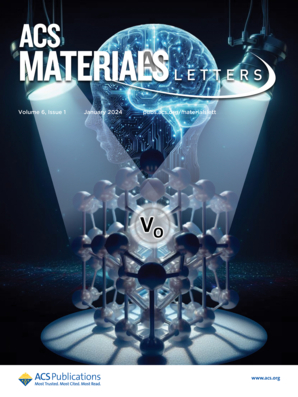Inducing Pyroptosis and Cuproptosis Using Copper Carriers for ROS-Augmented Effective Cancer Therapy
IF 8.7
1区 化学
Q1 MATERIALS SCIENCE, MULTIDISCIPLINARY
引用次数: 0
Abstract
Copper overload shows promise as a therapeutic strategy by disrupting copper homeostasis and inducing cell death pathways. However, challenges include the expulsion of excess copper from cells. This study introduces ZCCP NPs, three-metal MOF nanoparticles that amplify reactive oxygen species (ROS) to enhance cellular copper uptake and reduce copper efflux. In the tumor microenvironment, ZCCP NPs decompose in response to H+ and glutathione (GSH), releasing Zn and Co ions that increase intracellular ROS. Additionally, the TMPyP ligand converts to Phlorin under near-infrared (NIR) excitation, raising tumor site temperature and increasing cancer cell susceptibility to cuproptosis. Elevated ROS and temperature activate the NLRP3 inflammasome and Caspase-1, leading to gasdermin D cleavage and pyroptosis. Enhanced ROS generation impairs mitochondrial function and reduces copper efflux protein ATP7A expression, promoting cuproptosis. This strategy combines pyroptosis and cuproptosis for effective tumor treatment.

利用铜载体诱导嗜热症和铜嗜热症,实现 ROS 增强型有效癌症疗法
通过破坏铜平衡和诱导细胞死亡途径,铜超载有望成为一种治疗策略。然而,如何从细胞中排出过量的铜是一项挑战。本研究介绍了三金属 MOF 纳米粒子 ZCCP NPs,它能放大活性氧(ROS),从而增强细胞对铜的吸收并减少铜的外流。在肿瘤微环境中,ZCCP NPs 会在 H+ 和谷胱甘肽 (GSH) 的作用下分解,释放出 Zn 和 Co 离子,从而增加细胞内的 ROS。此外,TMPyP 配体会在近红外(NIR)激发下转化为叶绿素,从而提高肿瘤部位的温度,增加癌细胞对杯突症的易感性。升高的 ROS 和温度会激活 NLRP3 炎性体和 Caspase-1,导致 gasdermin D 断裂和热凋亡。增强的 ROS 生成会损害线粒体功能,减少铜外流蛋白 ATP7A 的表达,从而促进杯突形成。这一策略结合了热噬和铜噬,可有效治疗肿瘤。
本文章由计算机程序翻译,如有差异,请以英文原文为准。
求助全文
约1分钟内获得全文
求助全文
来源期刊

ACS Materials Letters
MATERIALS SCIENCE, MULTIDISCIPLINARY-
CiteScore
14.60
自引率
3.50%
发文量
261
期刊介绍:
ACS Materials Letters is a journal that publishes high-quality and urgent papers at the forefront of fundamental and applied research in the field of materials science. It aims to bridge the gap between materials and other disciplines such as chemistry, engineering, and biology. The journal encourages multidisciplinary and innovative research that addresses global challenges. Papers submitted to ACS Materials Letters should clearly demonstrate the need for rapid disclosure of key results. The journal is interested in various areas including the design, synthesis, characterization, and evaluation of emerging materials, understanding the relationships between structure, property, and performance, as well as developing materials for applications in energy, environment, biomedical, electronics, and catalysis. The journal has a 2-year impact factor of 11.4 and is dedicated to publishing transformative materials research with fast processing times. The editors and staff of ACS Materials Letters actively participate in major scientific conferences and engage closely with readers and authors. The journal also maintains an active presence on social media to provide authors with greater visibility.
 求助内容:
求助内容: 应助结果提醒方式:
应助结果提醒方式:


